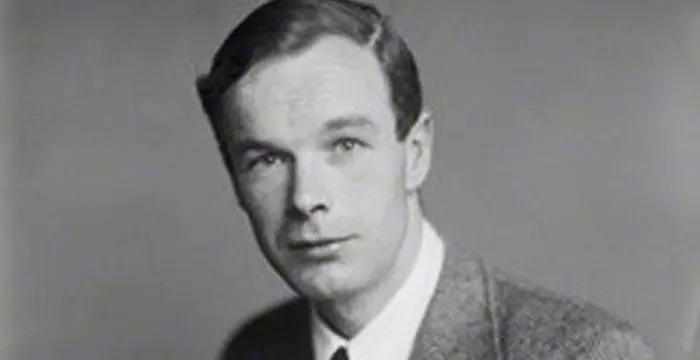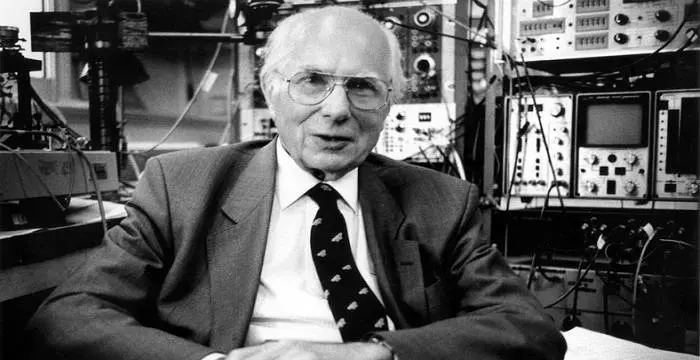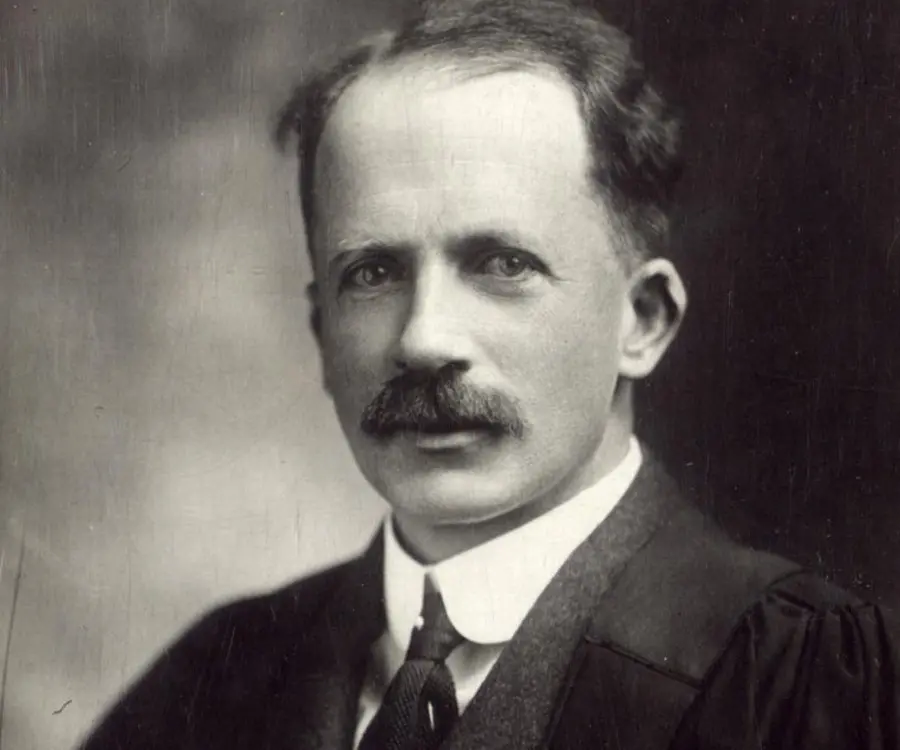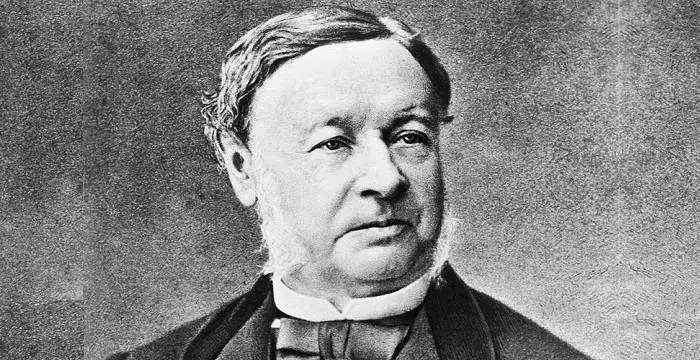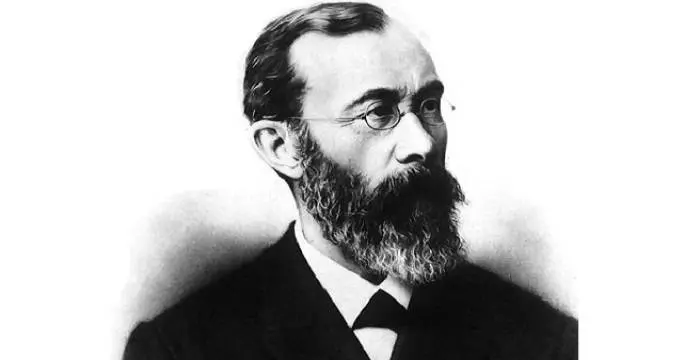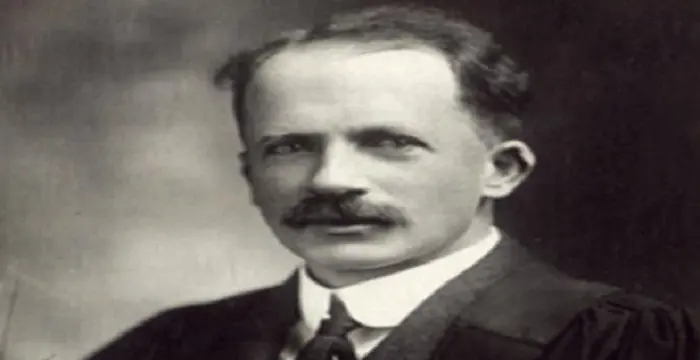
John James Rickard Macleod - Physiologists, Timeline and Childhood
John James Rickard Macleod's Personal Details
John James Rickard Macleod was a Scottish biochemist and physiologist who is credited for the discovery of insulin
| Information | Detail |
|---|---|
| Birthday | September 6, 1876 |
| Died on | March 16, 1935 |
| Nationality | British, Scottish |
| Famous | Scientists, Physiologists, Biochemists, Physiologists |
| Known as | Prof John James Rickard Macleod |
| Universities |
|
| Birth Place | Clunie, Perthshire, Scotland |
| Born Country | United Kingdom |
| Gender | Male |
| Sun Sign | Virgo |
| Born in | Clunie, Perthshire, Scotland |
| Famous as | Biochemist & Physiologist |
| Died at Age | 58 |
// Famous Physiologists
Alan Lloyd Hodgkin
Sir Alan Lloyd Hodgkin was an English biophysicist and a physiologist who received the Nobel prize in Physiology or Medicine in 1963. This biography profiles his childhood, life, research, achievements and timeline.
Emil Adolf von Behring
Emil Behring was a famous German physiologist who won the Nobel Prize for discovering an antitoxin for diphtheria. To know more about his childhood, career, profile and timeline read on
Andrew Huxley
Sir Andrew Fielding Huxley was a British physiologist, biophysicist, mathematician and a mechanical wizard. He was awarded the Nobel Prize for Medicine in 1963. This biography profiles his childhood, life, research, achievements and timeline.
John James Rickard Macleod's photo
Who is John James Rickard Macleod?
John James Rickard Macleod was a Scottish physiologist and biochemist who is credited with the discovery of insulin, together with Canadian physicist Frederic Banting. The duo shared the Nobel Prize in Physiology or Medicine in 1923. Right from the early years, Macleod displayed a liking for physiology. He started his career as a demonstrator at the London Hospital Medical School and soon made his way to the top. A pioneer in scientific research, Macleod’s career kick-started much before the discovery of insulin. During the early years of his career, Macleod researched on caisson sickness. It was during this time that he developed an interest in carbohydrate metabolism in relation to diabetes. After 1905, he published 37 papers on carbohydrate metabolism and 12 papers on experimentally produced glycosuria. In 1920, Macleod first collaborated with Frederic Banting. Though the collaboration did not turn out fruitful personally between the two as their relation never blossomed, professionally, with the help of Macleod’s student Charles Herbert Best and biochemist James Collip they successfully discovered insulin. Over time, insulin became one of the most important medical discoveries of the 20th century. However, Macleod’s direct involvement in the discovery became a matter of contention. In his life, Macleod was a successful teacher, powerful orator and prolific writer. He penned close to 200 scientific papers and 11 books in his lifetime. Furthermore, he held various academic positions at prestigious institutes across the globe.
// Famous Physiologists
Theodor Schwann
Theodor Schwann was a German physiologist who discovered the Schwann cells in the peripheral nervous system. This biography of Theodor Schwann provides detailed information about his childhood, life, achievements, works & timeline.
Wilhelm Wundt
Wilhelm Wundt was a renowned doctor who conducted pioneering studies on experimental psychology. To know more about his childhood, career, profile and timeline read on
Charles Best
Charles Best was a great scientist and a renowned physiologist who is remembered for being the co-discoverer of insulin. Read this biography to learn about his profile, childhood, life and timeline.
Childhood & Early Life
John James Rickard Macleod was born on September 6, 1876 in Clunie, Central Scotland to Robert Macleod and Jane McWalter Macleod. His father was a clergyman. Immediately following his birth, the Macleod family shifted base to Aberdeen, following his father’s transfer.
At Aberdeen, Macleod studied at Aberdeen Grammar School. Following his early education, he enrolled at the Marishchal College at the University of Aberdeen to study medicine. Brilliant in academics, he topped his class in first year.
In 1898, Macleod received his doctorate in medicine. Following his honorary doctorate degree, he received a travelling scholarship which led him to study physiological chemistry at the University of Leipzig, Germany, in 1899. Macleod published his first ever scientific paper in Germany.
Career
Upon returning to Britain in 1900, Macleod started working as a demonstrator in physiology under Sir Leonard Hill at the London Hospital Medical School.
For a year, Macleod and Hill collaboratively studied caisson sickness, a kind of illness that mostly affected people working under high atmospheric pressure of the submerged caissons. The sickness was commonly found in deep-sea divers and underwater tunnel builders. Together the two studied different case history of the disease to determine its cause. They concluded that rapidly coming out from the water caused bubbling of nitrogen in blood and tissues which led to caisson sickness. In 1903, they published a series of articles on the same.
In 1902, Macleod was appointed as a lecturer in biochemistry at the London Hospital Medical School. The same year, he received his doctorate in public health from Cambridge University. He also received the McKinnon research studentship of the Royal Society of Medicine.
In 1903, Macleod moved to the United States. He took up the post of a lecturer in physiology at the Western Reserve University, in Cleveland Ohio. While at Western Reserve University, Macleod pursued his research in caisson sickness. However, he developed an interest in carbohydrate metabolism in relation to diabetes.
In 1903, he was elected as a member of the American Physiological Society. His role play in the organization steadily augmented making him an important member of the organization. By 1921, he was appointed to the chair of the President of the APS.
From 1907 to 1910, his interest in diabetes led to intensive research on the topic. He published several works during this time such as ‘Diabetes; Its Physiological Pathology’ and also actively contributed to various journals. His works made him a popular name in any discussion on carbohydrate metabolism.
During World War I, Macleod committed himself to war-time duties. He served as a physiology lecturer for part of the 1916 winter semester at the McGill University in Montreal, Canada. He served as the Director of the Physiology Laboratory and an Associate Dean of the Faculty.
In 1916, he published the work, ‘Physiology and Biochemistry in Modern Medicine’. Five years later, he cemented his position by delivering an important paper, ‘Methods of Study of Early Diabetes’ to a diabetes symposium at Ontario Medical Association .
In 1920, he first met Frederic Banting, a Canadian physician who had an idea of curing diabetes from a secretion in the pancreas. Though Macleod wasn’t impressed by Banting’s idea, he nevertheless lent space to the latter at his laboratory during the summer vacation and even gave him experimental animals. Banting was assisted by Macleod’s student, Charles Herbert Best as a demonstrator.
Together with Best, Banting achieved a breakthrough in his research. The duo successfully isolated an internal secretion of the pancreas and succeeded in lowering the blood sugar level of another dog whose pancreas had been removed.
To be double sure of their findings, Macleod, Banting and Best did further research and experiments on the isolation of the secretion of pancreas. The success in their work led him to publish their reports in various journals. In 1921, the trio was joined by biochemist James Collip who helped in purifying the extract.
The first ever human clinical trial involving insulin at the Toronto General Hospital was a failure. In January 1922 the first successful clinical trial was performed. It was tagged as a miraculous achievement given that until then, there was no possible cure for diabetes. Insulin proved to be crucial in the treatment of diabetes, for it prevented augmentation of the disease and further transformed severe cases into milder ones. It also prevented diabetic coma and death.
In May 1922, the pharmaceutical company Eli Lilly & Co. took over mass production, but without an exclusive license, as the patent was transferred to the British Medical Research Council to prevent exploitation.
From August 1922 to May 1923, Macleod served as official secretary of the insulin committee created by the board of governors of the University of Toronto to deal with patenting and licensing issues. He was also responsible for coordinating the patenting of insulin in Great Britain and the United States, and was the main contact for Eli Lilly. It was only in 1926 that insulin was isolated in pure form by John Jacob Abel, and eventually became available as a manufactured product.
In 1926 Macleod published a book on diabetes and insulin titled ‘Carbohydrate Metabolism and Insulin’. In 1928 Macleod returned to Scotland. Therein, he replaced his former teacher Professor John Alexander MacWilliam to become Professor of Physiology at his alma mater. He was later appointed as the Dean of the University of Aberdeen Medical Faculty. Between 1929 and 1933 he was also a member of the Medical Research Council.
At Aberdeen, he actively continued his research and experiments. His subsequent work and publications involved a variety of physiological and biochemical topics, including diabetes, carbamates, purine metabolism, the breakdown of liver glycogen, intracranial circulation, ventilation, and surgical shock. He returned to conducting experiments on the role of the central nervous system in the causation of hyperglycemia, which he first researched on in 1908.
During the later phase of his scientific career, he came up with the work, ‘The Fuel of Life: Experimental Studies in Normal and Diabetic Animals’. In 1933, he made a lecture tour of the US and the following year came up with the 7th edition of his book, ‘Physiology and Biochemistry in Modern Medicine’.
Major Works
Macleod’s greatest contribution in his scientific career came in the 1920s decade when he discovered insulin, together with a Canadian physicist Frederic Banting and his student Charles Best. He was a pioneer in the field of carbohydrate metabolism and published a number of works in relation to the field, both before and after the discovery of insulin. Insulin proved to be crucial in the treatment of diabetes. It helped transform severe cases of diabetes into milder ones and also improved management of the condition by preventing diabetic coma and death.
Awards & Achievements
In 1919, Macleod was elected as a member of the Royal Society of Canada. Furthermore, he gained membership of the Royal Society of Edinburgh and London and London’s Royal College of Physicians. He was made an honorary fellow of the Academia Medica, Rome, a corresponding member of the Medical and Surgical Society, Bologna, the SocietéMedicaChirurgica, Rome, and the Deutsche Akademie der NaturforscherLeopoldina, as well as foreign associate fellow of the College of Physicians, Philadelphia.
In 1921, he became president of American Physiological Society which he served until 1923. For a year, from 1925 until 1926 he presided over the Royal Canadian Institute.
In 1923, Macleod received the prestigious Nobel Prize in Physiology or Medicine for the discovery of insulin together with Banting. He shared his half of the prize money with Collip, while Banting shared his half with Best.
He received honorary doctorates from the universities of Toronto, Cambridge, Aberdeen, and Pennsylvania, as well as from Western Reserve University and the Jefferson Medical College.
Personal Life & Legacy
Macleod was married Mary W. McWalter. The couple had no children.
During the 1930s, he suffered from acute arthritis that resulted into severe pain and limited movements. With passing time, his health declined further to a point in 1935 when he was admitted to a nursing home.
He breathed his last at his home in Aberdeen on March 16, 1935.
The argument behind Macleod’s involvement in the discovery of insulin made him a controversial figure in Canada due to Canadian physicist, Frederick Banting’s story. However, his reputation enhanced with the passage of time and his contribution to science was recognized in the country. The auditorium at Toronto University Medical Research Center was named in his honor. He was also inducted in the Canadian Medical Hall of Fame in 2012.
// Famous Biochemists
Robert Huber
Robert Huber is a German biochemist and Nobel Laureate. Check out this biography to know about his childhood, life, achievements, works & timeline.
Charles Best
Charles Best was a great scientist and a renowned physiologist who is remembered for being the co-discoverer of insulin. Read this biography to learn about his profile, childhood, life and timeline.
Isaac Asimov
Isaac Asimov was an American professor of biochemistry and a renowned author of science fiction and popular science books. Read this biography to know more about his life.
John James Rickard Macleod's awards
| Year | Name | Award |
|---|---|---|
Other | ||
| 0 | Nobel Prize in Physiology or Medicine (1923) | |
John James Rickard Macleod biography timelines
- // 6th Sep 1876John James Rickard Macleod was born on September 6, 1876 in Clunie, Central Scotland to Robert Macleod and Jane McWalter Macleod. His father was a clergyman. Immediately following his birth, the Macleod family shifted base to Aberdeen, following his father’s transfer.
- // 1898 To 1899In 1898, Macleod received his doctorate in medicine. Following his honorary doctorate degree, he received a travelling scholarship which led him to study physiological chemistry at the University of Leipzig, Germany, in 1899. Macleod published his first ever scientific paper in Germany.
- // 1900Upon returning to Britain in 1900, Macleod started working as a demonstrator in physiology under Sir Leonard Hill at the London Hospital Medical School.
- // 1902In 1902, Macleod was appointed as a lecturer in biochemistry at the London Hospital Medical School. The same year, he received his doctorate in public health from Cambridge University. He also received the McKinnon research studentship of the Royal Society of Medicine.
- // 1903For a year, Macleod and Hill collaboratively studied caisson sickness, a kind of illness that mostly affected people working under high atmospheric pressure of the submerged caissons. The sickness was commonly found in deep-sea divers and underwater tunnel builders. Together the two studied different case history of the disease to determine its cause. They concluded that rapidly coming out from the water caused bubbling of nitrogen in blood and tissues which led to caisson sickness. In 1903, they published a series of articles on the same.
- // 1903In 1903, Macleod moved to the United States. He took up the post of a lecturer in physiology at the Western Reserve University, in Cleveland Ohio. While at Western Reserve University, Macleod pursued his research in caisson sickness. However, he developed an interest in carbohydrate metabolism in relation to diabetes.
- // 1903 To 1921In 1903, he was elected as a member of the American Physiological Society. His role play in the organization steadily augmented making him an important member of the organization. By 1921, he was appointed to the chair of the President of the APS.
- // 1907 To 1910From 1907 to 1910, his interest in diabetes led to intensive research on the topic. He published several works during this time such as ‘Diabetes; Its Physiological Pathology’ and also actively contributed to various journals. His works made him a popular name in any discussion on carbohydrate metabolism.
- // 1908At Aberdeen, he actively continued his research and experiments. His subsequent work and publications involved a variety of physiological and biochemical topics, including diabetes, carbamates, purine metabolism, the breakdown of liver glycogen, intracranial circulation, ventilation, and surgical shock. He returned to conducting experiments on the role of the central nervous system in the causation of hyperglycemia, which he first researched on in 1908.
- // 1916During World War I, Macleod committed himself to war-time duties. He served as a physiology lecturer for part of the 1916 winter semester at the McGill University in Montreal, Canada. He served as the Director of the Physiology Laboratory and an Associate Dean of the Faculty.
- // 1916In 1916, he published the work, ‘Physiology and Biochemistry in Modern Medicine’. Five years later, he cemented his position by delivering an important paper, ‘Methods of Study of Early Diabetes’ to a diabetes symposium at Ontario Medical Association .
- // 1919In 1919, Macleod was elected as a member of the Royal Society of Canada. Furthermore, he gained membership of the Royal Society of Edinburgh and London and London’s Royal College of Physicians. He was made an honorary fellow of the Academia Medica, Rome, a corresponding member of the Medical and Surgical Society, Bologna, the SocietéMedicaChirurgica, Rome, and the Deutsche Akademie der NaturforscherLeopoldina, as well as foreign associate fellow of the College of Physicians, Philadelphia.
- // 1920In 1920, he first met Frederic Banting, a Canadian physician who had an idea of curing diabetes from a secretion in the pancreas. Though Macleod wasn’t impressed by Banting’s idea, he nevertheless lent space to the latter at his laboratory during the summer vacation and even gave him experimental animals. Banting was assisted by Macleod’s student, Charles Herbert Best as a demonstrator.
- // 1921To be double sure of their findings, Macleod, Banting and Best did further research and experiments on the isolation of the secretion of pancreas. The success in their work led him to publish their reports in various journals. In 1921, the trio was joined by biochemist James Collip who helped in purifying the extract.
- // Jan 1922The first ever human clinical trial involving insulin at the Toronto General Hospital was a failure. In January 1922 the first successful clinical trial was performed. It was tagged as a miraculous achievement given that until then, there was no possible cure for diabetes. Insulin proved to be crucial in the treatment of diabetes, for it prevented augmentation of the disease and further transformed severe cases into milder ones. It also prevented diabetic coma and death.
- // May 1922In May 1922, the pharmaceutical company Eli Lilly & Co. took over mass production, but without an exclusive license, as the patent was transferred to the British Medical Research Council to prevent exploitation.
- // 1923In 1923, Macleod received the prestigious Nobel Prize in Physiology or Medicine for the discovery of insulin together with Banting. He shared his half of the prize money with Collip, while Banting shared his half with Best.
- // 1933During the later phase of his scientific career, he came up with the work, ‘The Fuel of Life: Experimental Studies in Normal and Diabetic Animals’. In 1933, he made a lecture tour of the US and the following year came up with the 7th edition of his book, ‘Physiology and Biochemistry in Modern Medicine’.
- // 1935During the 1930s, he suffered from acute arthritis that resulted into severe pain and limited movements. With passing time, his health declined further to a point in 1935 when he was admitted to a nursing home.
- // 16th Mar 1935He breathed his last at his home in Aberdeen on March 16, 1935.
- // 2012The argument behind Macleod’s involvement in the discovery of insulin made him a controversial figure in Canada due to Canadian physicist, Frederick Banting’s story. However, his reputation enhanced with the passage of time and his contribution to science was recognized in the country. The auditorium at Toronto University Medical Research Center was named in his honor. He was also inducted in the Canadian Medical Hall of Fame in 2012.
// Famous Scientists
Juliane Koepcke
Juliane Koepcke is a German-Peruvian biologist, who was the lone survivor among the 92 passengers and crew of the ill-fated LANSA Flight 508 that crashed in the Peruvian rainforest on 24 December 1971. Know more about her life in this biography.
Henry Cavendish
Henry Cavendish was a theoretical chemist and physicist, renowned for discovery of hydrogen and calculation of the mass of earth. To know more about his childhood, profile, timeline and career read on
Konstantin Tsiolkovsky
Konstantin Tsiolkovsky was a Russian rocket scientist and a pioneer of astronautics. This biography provides detailed information about his childhood, family, personal life, career, achievements, etc.
Gabe Newell
Gabe Newell is an American computer programmer and businessman, best known as the co-founder of ‘Valve Corporation.’ This biography provides detailed information about his childhood, family, personal life, career, etc.
Grigori Perelman
Grigori Perelman is a Russian mathematician who is best known for his contributions to Riemannian geometry and geometric topology. Check out this biography to know about his childhood, family life, achievements and fun facts about him.
Eduardo Saverin
Eduardo Luiz Saverin is a Brazilian internet entrepreneur and investor. This biography profiles his childhood, life, career, achievements, and timeline
John James Rickard Macleod's FAQ
What is John James Rickard Macleod birthday?
John James Rickard Macleod was born at 1876-09-06
When was John James Rickard Macleod died?
John James Rickard Macleod was died at 1935-03-16
Where was John James Rickard Macleod died?
John James Rickard Macleod was died in Aberdeen
Which age was John James Rickard Macleod died?
John James Rickard Macleod was died at age 58
Where is John James Rickard Macleod's birth place?
John James Rickard Macleod was born in Clunie, Perthshire, Scotland
What is John James Rickard Macleod nationalities?
John James Rickard Macleod's nationalities is British, Scottish
What was John James Rickard Macleod universities?
John James Rickard Macleod studied at University of Aberdeen
What is John James Rickard Macleod's sun sign?
John James Rickard Macleod is Virgo
How famous is John James Rickard Macleod?
John James Rickard Macleod is famouse as Biochemist & Physiologist
